The Tejas is an aircraft the IAF can do without, although pressures to induct it have led to orders. Meanwhile, the sands of time, inexorably straining through the impassive hourglass of IAF chronicles, are constant forewarnings of rapidly diminishing numbers. Despite the measures taken today, the numbers are preordained to drop further before the results of any replenishment arrangements manifest themselves. The most optimistic projection for the current 33 squadron strength to reach the sanctioned 42 squadrons is 2027, despite official noise about raising it to 42 by 2022. In the worst possible case, the IAF could actually come down to squadron strength of 25 to 27 before ongoing efforts bring about an upward swing.
The situation is like a time bomb whose trigger, unfortunately, lies with our inimical neighbours…
Sometimes, in a strange hotel room, the unfamiliar noise from an air conditioning louvre can be disturbing at the onset, soon turning into an acceptable, almost comforting, hum. In a similar vein, the constant clamour of the Indian armed forces about shortfalls in war-waging equipment and weaponry, has now come to be accepted by the nation and the establishment that governs it, as clamour in the background, avoidable if possible, but acceptable if not. Occasionally, the military exacerbates this sense of complacency inadvertently. Recently, the Chief of the Air Staff (CAS), speaking at the occasion of presentation of President’s Standards to two Air Force units, said, “Nobody wants war. War causes problems with the national economy and development. We feel that deterrence should be there; but war should not take place. We should keep striving for economic development. But if a warlike situation arises, then that is what the armed forces are there for. The armed forces are always ready, but in my view, the chances of war are very less.”
Nonetheless, the shortfall of military wares for the defence forces is an alarming situation, all the more so on account of the inordinately long periods for which the shortfalls have existed. Procurement sagas, sordid and sad in their narrative, have rendered the situation disturbing and distressing. Perhaps the most frightening shortfall is visible in the Indian Air Force (IAF) with its gnarled composition, whittled down by peacetime attrition to a 33-squadron caricature of its 42 squadron authorisation. Ongoing phasing out of old aircraft renders this situation worse every day while in-progress endeavours to replenish these numbers are self-evidently inadequate. The situation is like a time bomb whose trigger, unfortunately, lies with our inimical neighbours.
The Challenges Accosting the Indian Air Force (IAF)
India and China have been, in recent years, competitors in some arenas, but the rivalry has been far from healthy or friendly. China’s actions have been indicative of its intent and have varied from the irritating such as blocking India’s entry into Nuclear Suppliers’ Group (NSG) to the menacing armed intrusions deep into Indian territory. Constant reminders from China that India’s Tawang is China’s Zang Nan province serve to blow fresh draughts of air over the cinders of the Sino-Indian territorial dispute, keeping them eternally on the brink of a flare up. China has gradually built up its military presence along its borders with India and juxtaposed with recently announced military reforms as a part of which Tibet Military Command’s (TMC) authority level was raised to place it directly under the People’s Liberation Army (PLA). This build up is a bad portent for India. There are other ominous developments in Tibet with logistical infrastructure being boosted and some indications of TMC rehearsing military combat missions on its own obviously aimed at India.
India and China have been, in recent years, competitors in some arenas, but the rivalry has been far from healthy or friendly…
A large number of airports have been developed and more airports with military capability are under development. One estimate puts the number of major airbases at 14 and that of smaller airstrips with military potential at 20. If the People’s Liberation Army Air Force (PLAAF) aircraft deployed in the erstwhile Lanzhou and Chengdu Military Regions are reckoned as those that can be used from these airports in Tibet, the total could be around 300 fighters and around 72 bombers. Chengdu MR had two fighter divisions with J-7H, J-7II, J-10A, Su-27SK and J-11 fighters and a transport division, whereas Lanzhou MR had two fighter divisions (J-7H, J-7II, J-8F, J-8H, JH-7A, J-11 and J-11B) and a bomber division (H-6). While the older aircraft would have limited capability from the high elevation airports in Tibet, the Su-27, J-10 and J-11/11B represent a veritable capability usable against India. On the doctrinal front, the reference by some sections of Chinese government-run media to PLAAF as a ‘strategic force’, is alarming inasmuch as this term was so far used only in the context of China’s Second Artillery Corps (now People’s Liberation army Rocket Force or PLARF). The 1962 War was about Tibet and the next India-China War could be launched from Tibet, with PLAAF aircraft deployed in Tibet playing a major role in airfield strikes, air defence and close air support to ground forces.
Driven by its consuming animosity for India and encouraged by China in its anti-India acts and iterations, Pakistan is a challenge that the IAF has to consider in all its calculations. While the Pakistan Air Force (PAF) aircraft numbers do not match up to those of the IAF, the threat cannot be shrugged off as the flexibility, reach and intensity of air power application are not directly proportional to sheer numbers. The presence of F-16s and J-31s on PAF’s inventory renders it a veritable adversary in the air and especially when they are used in support of Pakistani land and sea forces. Moreover, as has been argued in the past, the use of tactical nuclear weapons as threatened by Pakistan continually, represents a strategic impact on expected Indian response which may well be nuclear in nature and lead to not-so-limited war.
The PAF has been carrying out joint air exercises with the PLAAF under the series “SHAHEEN” since 2011 and significantly, the 2015 edition was held in Tibet. This fact by itself is significant and serves to highlight the apprehensions of many defence analysts of the possibility of a two-front war besetting India in the future. Notwithstanding iterations by some others who dismiss the idea of a two-front war, it is a prospect that needs to be considered as a classic risk management exercise. Even if the probability that it might happen is low, the severity of consequences should it happen, would be disastrous for the IAF and for the nation.
A large number of airports have been developed and more airports with military capability are under development…
The Shortfall
Catering for the worst case scenario of a two-front war, analysts project a combat strength requirement of modern fourth and fifth generation aircraft to be bolstered up to anywhere between 45 and 60 squadrons. There is no objective formula to arithmetically calculate a nation’s need for combat squadrons based on its geographical extent or the strength of combat squadrons of the enemy. Appreciation of subjective and intangible factors guides the decision path and of course, a critical factor is affordability of progressively complex and hence hugely expensive aircraft. Currently, the sanctioned strength of the IAF is 42 combat squadrons, a figure disparaged by some analysts as too low and incommensurate with India’s size, economic prowess, strategic compulsions and the size of the Indian armed forces.
The IAF is the fourth largest air force in the world! However, India does not have even 42 squadrons today. The actual strength today and this is where the alarm bells start ringing, is 32 and that includes MiG 21 aircraft whose advancing years are phasing them out faster than foreseeable replacement inductions. Around hundred MiG 21 aircraft are expected to be phased out in 2017, and that will bring the total squadron strength down by another five. Speaking at a press conference on September 24, 2016 in Delhi, the former Defence Minister AK Antony said, “By 2022, this strength will be reduced to 25 squadrons…” The CAS in an apparent contradiction reportedly told media on the eve of Air Force Day this year that the Ministry of Defence was working towards building up to 42 squadrons by 2022, the end of the next Five Year Plan. Whether the current figure of 32 moves up or slides further down, the fact remains that there seems to be no sense of urgency on the part of the establishment to address the continuing, and indeed, worsening shortfall.
The PAF has been carrying out joint air exercises with the PLAAF under the series “SHAHEEN” since 2011…
Redressal Needed
An illustrative example is that of Medium Multi-Role Combat Aircraft (MMRCA) selection which took an inordinately long time to fructify in the form of 126 (plus 63 on option) Rafale aircraft. The winner was announced in 2012, but after prolonged wrangling, was cancelled in July 2015. Subsequently, it was decided to purchase only 36 Rafale jets. The first of these could be expected only after about three years with the last one taking another year and a half to arrive. As can be seen, the Rafale is not an immediate redressal to the shortfall. Nor, for that matter is the number restricted to 36 is adequate for comfort.
The Rafale is a medium-sized combat aircraft as compared to the multi-role Sukhoi Su 30 MKI which is now the backbone of the IAF and is an air superiority fighter with ground attack capability. A total of 272 Su 30 MKIs have been ordered and since 1999, over 200 have reportedly been delivered. Another 40 aircraft have now been ordered taking the total number to 312.
However, the numbers by themselves do not tell the full story. There has been a distressing lack of spare parts and so serviceability has been just over 50 per cent, an unacceptable figure for a frontline combat aircraft which is the single largest type on IAF inventory. India is now planning to invest around $300 million to create a logistics centre for spare parts at Hindustan Aeronautics Limited (HAL) which license-produces the type after the first 50 machines were delivered by Russia. An upgrade programme (Sukhoi Super 30) is envisaged for all the Su 30 MKIs of IAF and the contract is likely to be signed next year. Meanwhile, around 40 will be modified to carry the BrahMos Cruise missile.
Recent Su 30 squadron relocations to stations with a China-bias is significant from the point of view of national security, but poor serviceability will continue to afflict the fleet until the new spare parts centre becomes effective. Given HAL’s track record, there is also a question mark on the centre becoming the urgently required remedy to Su 30 serviceability. The IAF’s MiG 29s continue to provide effective air superiority cover while the Mirage 2000 represents air superiority and multi-role capability. The Jaguar is still a veritable deep penetration strike aircraft. All three types are under upgrades to combat their vintage. The 60-odd Jaguars with DARIN-II will continue to operate that system, while the other 60 are being upgraded to DARIN-III. DARIN stands for Display Attack Ranging Inertial Navigation which is a navigation attack system. Along with the upgrade to Honeywell F 125N engines will ensure that the Jaguar is a useful fighter aircraft for the next 15 to 20 years.
The IAF’s MiG 29s continue to provide effective air superiority cover while the Mirage 2000 represents air superiority and multi-role capability…
The tactical strike MiG 27 and the multi-role/ground attack MiG 21 make up the rest of the IAF inventory. While future plans envisage induction of the Tejas, the indigenously developed and produced Light Combat Aircraft of which 120 have been ordered although the aircraft is still months away from its Final Operational Clearance. Amidst fanfare, the Tejas was inducted into the IAF on July 01, 2016 and a squadron formed but the aircraft is unlikely to be one as yet that would add a genuine punch to the IAF’s combat readiness. Nonetheless, its induction will add to the numbers and possibly it may be used in low threat scenarios. Despite the usual official noises about how good the Tejas is, the informal grapevine alludes to disparaging remarks about its combat-worthiness.
Considering the fact that the MMRCA plan originated in 2007 and a decade has gone by, it is reasonable to presume that the urgent operational requirement projected then would have gone up considerably from the figure of 126 due to the MiG 21/27s dropping off due to exhaustion. The whittling of the number from 126 to 36 Rafale jets therefore, is a matter of disquiet and one hopes that there are some more surprises with the government to make up for the impending shortfalls.
Future Possibilities
The IAF awaits with bated breath, a finalisation of a deal with Russia on the Fifth Generation Fighter Aircraft (FGFA) for which an inter-governmental agreement was signed as far back as 2007.The prototype, nicknamed the Sukhoi ‘T-50’ has been built by the Russians under the Prospective Airborne Complex of Frontline Aviation (PAK-FA) programme and is being tested. India’s wish list for the final product includes more than forty modifications to the current prototype including a super cruise capability, a 360-degree radar system, added stealth features and, most importantly, a new engine as India is unhappy over the installation of the AL-41F1 engine on the prototype which is essentially an upgraded version of the AL-31FP engine on the Su-30MKI.
Hopefully, India and Russia will reach an agreement on the Transfer of Technology provisions so that the FGFA becomes a reality…
There is also the question of the Ministry of Defence wanting that the R&D contract should include a major share for India so that it can derive the benefits of Transfer of Technology. However, the negotiations have been moving sluggishly and even after they fructify, the first FGFA to enter active service is expected to take at least seven years from the time joint R&D starts in earnest after the design is frozen. Hopefully, India and Russia will reach an agreement on the Transfer of Technology provisions so that the FGFA becomes a reality. According to estimates, around 127 FGFAs could be ordered by the IAF. One dark cloud on the horizon is the fear stated by some experts that the Super Sukhoi upgrade programme could cast a shadow over the FGFA programme, or at least delay it substantially.
The ‘Make in India’ programme has become the buzzword in recent months and the government appears intent on meshing it into India’s military modernisation endeavours as well. To meet the shortfall of fighter aircraft, essentially to replace the MiG 21 fleet, it is looking at a single engine fighter of foreign design, but to be produced in India with a comprehensive Transfer of Technology. Possibly 200 to 300 of this aircraft could be ordered to make up lost numbers. International manufacturers have been sent invitation letters in this regard and Lockheed Martin, the current manufacturer for F-16 aircraft was the first to make an interesting offer to India – that of shifting its only operational F-16 production line to India. The purchase of the F-16 in substantial numbers is implicit to the offer, as can be expected. India has not exactly jumped at the offer and indeed, some analysts have termed the F-16 as an aircraft which is obsolescent.
There is also no clear cut iteration from the US establishment about Transfer of Technology, without which the offer would be a non-starter. The other strong contender is SAAB Gripen E. SAAB has offered to transfer the entire product planning capability to India as an offset arrangement and to export the Gripen E from India. Boeing’s F/A 18 E/F are on offer and so is the Eurofighter Typhoon but both are twin-engine aircraft and hence do not fit India’s present requirement. The F-16 Block 70, the latest version of the F-16 and the Gripen E are thus the only two contenders. The final decision would be weighed by IAF trials and of course, the life cycle price tags each aircraft comes with.
If a war, single-front or two-front, becomes inevitable, no amount of knee-jerk reactions will bring up the combat aircraft strength within a meaningful timeframe to contribute to a war that has started…
The F-16 is an older design but comes with the carrot of creating the only facility for production of the aircraft in the world and, equally importantly, spare parts for the 3,200-odd F-16s flying around the world. Having a fighter production facility in addition to the one for the Tejas, would be a boost to India’s aerospace industry as well as to the ‘Make in India’ programme. However, going by past experience, the finalisation of a deal for the F-16 or the Gripen E could take a long time. One hopes that the deal comes soon and incorporates adequate technology ingress to empower India’s ambition to produce its own, entirely indigenously designed Advanced Medium Combat Aircraft (AMCA). Independent of this decision, parleys are afoot to get Saab to help design an improved Mk II version of the Tejas.
Conclusion
From the foregoing, it is evident that there is a serious shortfall in the IAF’s combat aircraft holdings and that immediate relief is not on the near horizon. The first Rafale jet is expected only in September 2019 and the last one a year and a half later while the first FGFA is at least seven years away, presuming the deal is finalised soon. The F-16/ Gripen E decision process could take years of wrangling over life cycle costs, Transfer of Technology and commercial terms related to export of complete aircraft and spares to existing customers (Pakistan is an F-16 user) and, even after a final choice is made, the setting up of the production facility would take years before the first Indian-produced aircraft flies off, especially if, as expected, HAL is the manufacturing partner.
The Tejas is an aircraft the IAF can do without, although pressures to induct it have led to orders. Meanwhile, the sands of time, inexorably straining through the impassive hourglass of IAF chronicles, are constant forewarnings of rapidly diminishing numbers. Despite the measures taken today, the numbers are preordained to drop further before the results of any replenishment arrangements manifest themselves.
In the worst possible case, the IAF could actually come down to squadron strength of 25 before ongoing efforts bring about an upward swing.
The most optimistic projection for the current 33 squadron strength to reach the sanctioned 42 squadrons is 2027, despite official noise about raising it to 42 by 2022. In the worst possible case, the IAF could actually come down to squadron strength of 25 before ongoing efforts bring about an upward swing.
The implications of this drop in numbers are disquieting as, despite some wishful thinking about war being a distant probability, it cannot be ruled out altogether. After the ‘surgical strike’, Pakistan has been alternately sulking and threatening. Its warning of using its tactical nuclear weapons represents the possibility of an escalation into an all-out war. China has never let us forget its territorial claims over our territory and its machinations in Tibet pose, if not in the immediate time frame then at least for the future, a menacing challenge. Some of India’s actions in response to China’s blocking its entry into the NSG would not have gone down well with China and behind its inscrutability may be lurking a tangible threat for India.
If a war, single-front or two-front, becomes inevitable, no amount of knee-jerk reactions will bring up the combat aircraft strength within a meaningful timeframe to contribute to a war that has started. An ignominious chapter in the history of Indian air power could well be written as a consequence. To forestall that outrage, India needs to get into a fast forward mode to acquire new combat aircraft for the IAF. Meanwhile, the time bomb continues to tick!




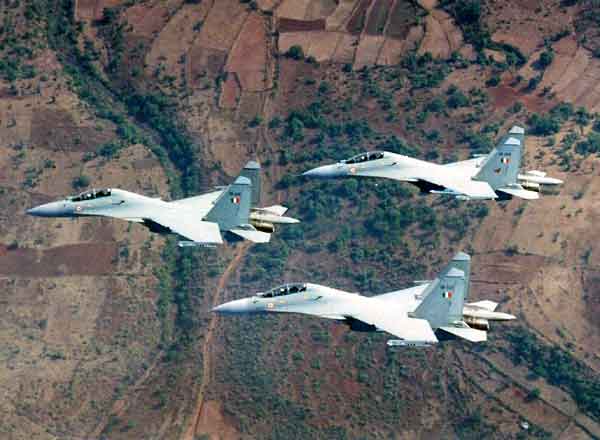
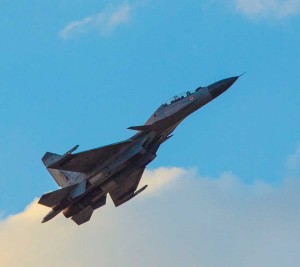
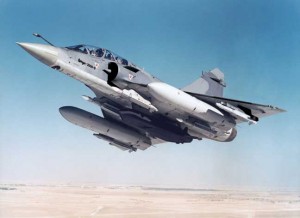
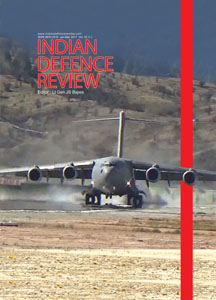
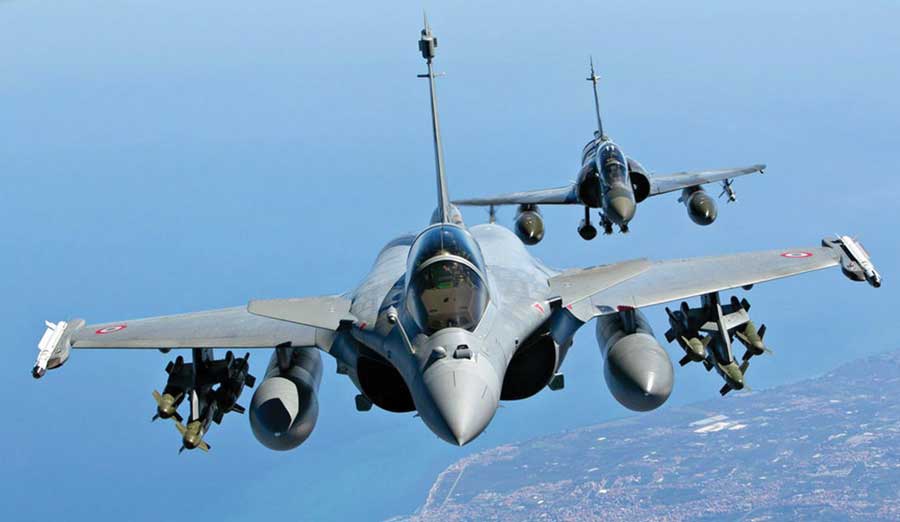
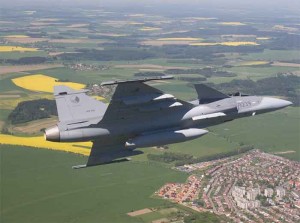

Well analysed and succinctly put across by the author of seriousness of our shortcomings in our air power. MIG 21 have long outlived their utility but unfortunately continue to be our mainstay. The issue of spare parts is another issue, which does not have any quick fix solution. Most of the suppliers too can hardly be blamed for it, because once an aircraft is not in service then the supplier can hardly be expected to produce spares. HAL can find an answer to it. Most of the Airforce acquisitions being of high value have invariably got in to controversies and delay in procurement. Purchase of 36 Rafale aircrafts is at best a stop gap measure but does not resolve the main issues of gaps in our security. Tragedy that winner was announced in 2012, but, was cancelled in July 2015. The aspect of lead time to get these deliveries may not be appreciated by most of our countrymen.
IAF officers write articles without any base. How did you calculate your requirement of fighter planes? Is it based on India’s population or the number of sorties IAF required conducted? IAF fought 1971 war with 34 squadrons and 408 fit fighter planes? Now you have 488 fighter planes excluding Mig 21, Mig 29 and Tejas. All are front line fighters far superior to Mi 21. But the fact is that number fighter plane will come down in future IAF cannot to anything about it.
21 century is the age of missiles, rockets, connected avionics, and UAV. Using missiles and rockets will reduce the cost of war and save human life. This country will never become a developed country like South Korea, Japan, and Taiwan. India having a large population cannot afford to spend million of dollars on defense.like superpowers to protect the sovereignty of our motherland. Earlier there was no other way to reduce the expenditure and going on spending billions of dollars to purchase weapon carrying vessels like fighter planes helicopters, Aircraft carrier, Warship, frigate destroyers and submarines etc as the guns, shells, and bombs were not having the range to destroy enemy installations and artillery. Now missiles will serve the same purpose with much cheaper cost. Today we are a super power in missile technology. Moreover, India and Isreal can develop best missiles in the world and get rid of the weapons developed by Westerners and the USA to rule the world. The latest USA fighter plane F-35 costs 178 millions dollars.The Tomahawk missile costs only 1.59 million, dollars. This missile has got the same range like a fighter. Missiles cannot be destroyed easily. like fighter planes and Naval vessel. So stop spending billions of dollars for the development of weapon carrying vehicles and vessels. Moreover, we are not going to attack any country, We should manufacture such powerful missiles no one will dare to attack us.
The shortfall of combat resources of the IAF is well known but not so well understood. The author has analysed the issue in a simple and matter of fact manner to be easily comprehended.
Authors assessment that the combat resources of the IAF could actually dwindle to 25 squadrons before accretion could take effect is quite disconcerting. The Government needs to take a serious note of it and take corrective measure.
Why can’t we produce a world class MRCA? Or would we be always dependent on Firangis? This way can we hope to force our political will on China or even a nuclear Pak? That is why India has no option but to whole heartedly pursue make in India objectives ruthlessly. FGFA negotiations need to be concluded in quick time.
Having offensive networked ground based air defence is absolutely essential while India overcomes her critical combat air assets shortage. Value for money effective ground based systems need to be mass produced and put in service. Have we the capacity to do that?
Can India get on to produce strike UAVs?
If the answer to above two posers is a shaky yes or no, then we need to get off the moral high horse and have a serious relook at the nuclear doctrine!
And we have not yet talked about the state of Indian Navy!